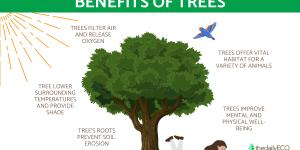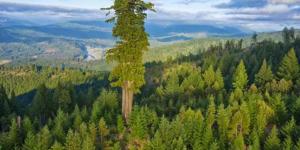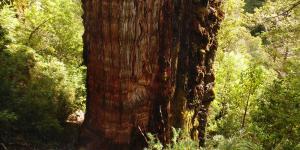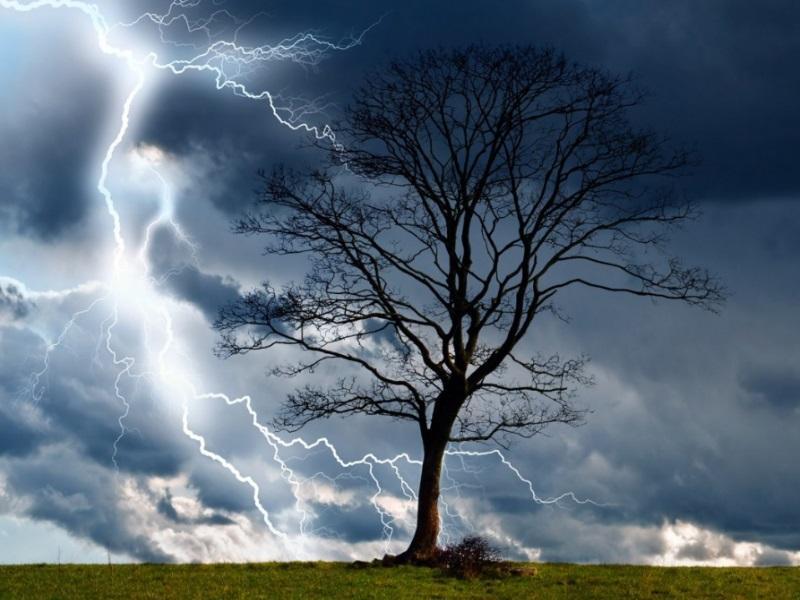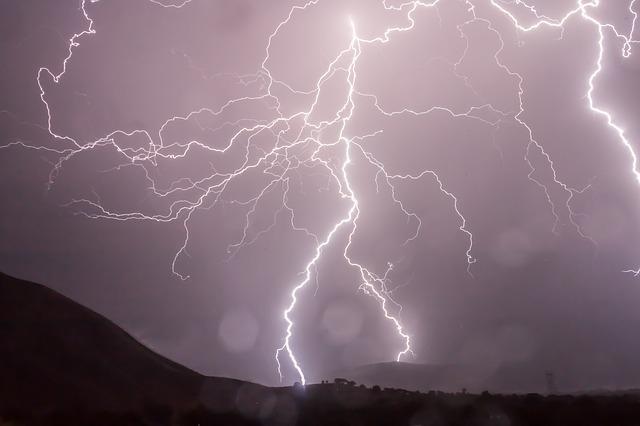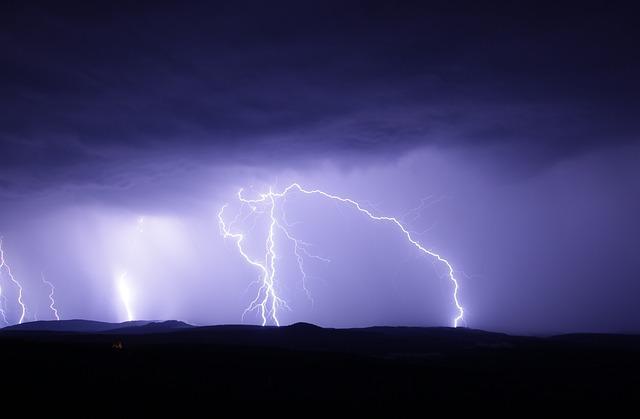Do Trees Attract Lightning?

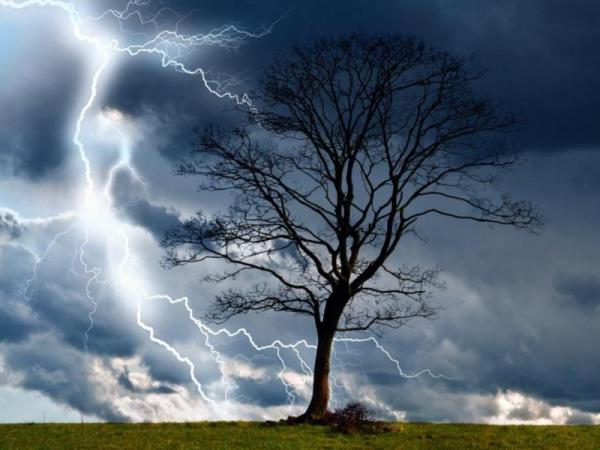
Trees, with their towering heights and expansive canopies, have long been associated with lightning strikes. This perception has fueled a common belief that trees actively attract lightning, drawing its powerful energy from the sky. While this notion might seem like a myth, there is a scientific basis for why trees are more susceptible to lightning strikes compared to other objects in their surroundings. Understanding the underlying principles of lightning and trees is crucial for comprehending this phenomenon and making informed decisions during thunderstorm conditions.
This article from thedailyECO examines whether trees attract lightning, shedding light on and debunking myths and misconceptions about the connection between trees and lightning.
What is lightening?
Lightning is a powerful electrical discharge that occurs within a cloud or between a cloud and the ground. These electrical charges are formed due to interactions among ice particles and water droplets within the thundercloud. As the storm develops, strong updrafts and downdrafts within the cloud cause the ice particles to collide and rub against each other, creating a separation of charges.
How does lightning from?
The initial phase of lightning formation involves the separation of charges within the cloud. Negative charges accumulate at the bottom of the cloud, while positive charges collect at the top and in the surrounding atmosphere. This separation of charges creates an immense electrical potential difference, reaching up to 100 million volts.
As the electrical potential difference grows, the air surrounding the cloud becomes ionized, meaning it loses some of its neutral charge. This ionized air, acting as a conductor, allows the strong electric field to break down, leading to a rapid discharge of electricity. This discharge is what we perceive as lightning.

What determines the path of lightning?
The path of lightning is influenced by several factors, including:
- Electrical potential difference: the greater the electrical potential difference between the cloud and the ground or within the cloud, the more likely it is for lightning to strike.
- Path of least resistance: lightning always seeks the path of least resistance to ground, often following the path of tall structures, trees, or power lines.
- Moist air: moist air conducts electricity more easily, making it more likely for lightning to strike in humid conditions.
- Sharp points: objects with sharp points, such as trees and metal structures, provide easier pathways for lightning to travel.
- Proximity to updrafts and downdrafts: lightning is more likely to strike areas where there are strong updrafts and downdrafts, as these conditions promote the separation of charges within the cloud.
You might also be interested in this other article, where we uncover the science behind hurricanes, the meteorological phenomenon that commands the tropical oceans.
Do trees attract lightening?
Contrary to popular belief, lightning does not have personal preferences or biases when selecting its target. It simply follows the path of least resistance, which is often determined by the physical characteristics of the surrounding environment.
While tall trees and other tall structures are more likely to be struck due to their height and conductive nature, lightning can strike any object, regardless of size or material. Even small, isolated objects, such as a person standing in a field, can be at risk of a lightning strike if the conditions are right.
Having that said, it is true that trees can act as conductive pathways for lightning due to their inherent moisture content and intricate branching structure.
The moisture content of trees, particularly in their sapwood and leaves, plays a significant role in their conductivity. Water molecules readily dissociate into ions, making them excellent conductors of electricity. This conductive fluid, along with the extensive network of sapwood channels within the tree, creates a pathway for lightning to travel down the tree's trunk and into the ground.
Trees' branching structures further enhance their susceptibility to lightning. The intricate network of branches, with their sharp points and large surface area, provides multiple paths for lightning to travel. As lightning seeks the path of least resistance, these branching structures offer an easier route compared to the surrounding air or ground.
What causes a tree to get struck by lightning?
There are several factors that contribute to the likelihood of a tree being struck by lightning. Let's explore some of them:
Height
The most significant factor influencing tree strikes is height. Tall trees, particularly those standing isolated or taller than surrounding structures, are more likely to attract lightning due to their greater height above ground. Lightning tends to seek the highest point in the vicinity, and tall trees often fulfill this requirement.
Isolation
Solitary tall trees, particularly those located in open areas or devoid of taller structures nearby, are at a higher risk of lightning strikes. The lack of competing objects for lightning to strike makes these trees more prominent targets.
Species and foliage density
Tree species with higher water content and denser foliage tend to be more susceptible to lightning strikes. These trees provide a greater supply of moisture for lightning to conduct through, and their dense foliage creates a larger surface area for lightning to interact with.
Leaf shape and structure also influence lightning attraction, as trees with flat, broad leaves offer more surface area for lightning to strike.
Certain tree species, such as oak, redwood, and Douglas fir, may be more prone to lightning strikes due to their combination of height, moisture content, and structural characteristics. These trees often stand tall and isolated, and their dense foliage and high water content provide ideal conditions for lightning to conduct through.

How much more likely is lightning to hit a tree than a person?
Lightning strikes trees far more often than people. In fact, trees are the second most common target of lightning strikes, accounting for approximately 30% of all strikes in the United States.
The average person's risk of being struck by lightning is about 1 in 500,000. However, the risk of being struck by lightning while standing under a tree is much higher, about 1 in 1,000.
It is important to remember that lightning can strike anywhere, even if you are taking shelter in a building. If you are caught outdoors during a thunderstorm, it is best to seek shelter indoors immediately.
If you are unable to find shelter, stay away from tall trees and open fields. Find a low, flat area and crouch down with your feet together and your hands over your head.
Here are some additional safety tips for staying safe during thunderstorms:
- Pay attention to weather forecasts and warnings.
- If you hear thunder, you are already within striking distance of lightning.
- Go indoors as soon as possible.
- Stay away from water and metal objects.
- If you are in a car, stay inside and drive to the nearest shelter.
By following these safety tips, you can help to reduce your risk of being struck by lightning.
After exploring the fascinating world of lightning and trees, delve into the phenomenon of torrential downpours, nature's relentless outpouring of water.
If you want to read similar articles to Do Trees Attract Lightning?, we recommend you visit our Facts about nature category.

